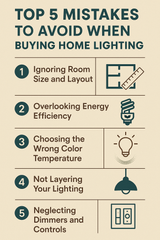Types of Lighting That Makes Your Art Stand Out
Ask an artist as to what frustrates him the most and the reply will invariably pertain to the impact of changing light conditions on his hues, especially if he is dependent on natural light. Once an artist begins an artwork, he could remain engrossed in it for hours on end without realizing that the light streaming in through the window might have changed in its intensity. When this happens, the colors that he might have mixed earlier appear different, thus causing him repeat the process all over again. If you are an artist and have faced this situation, it is time to seriously consider art studio lighting.
By opting for studio lighting, you would be better placed to deliver artwork which is a true reflection of your caliber as an artist and indicative of your immense potential. Because studio lighting does not suffer from the inconsistencies that characterizes natural light, it serves as a perfect aide to the artist. Of course there are certain nuances to it which you must be aware of in case you opt for it and these are discussed as follows –
Types of Lighting
Courtesy of technological advancement not having spared even the studio lighting niche, today there are a variety of studio lights to choose from. While you might be cognizant with names like incandescent, LED, fluorescent and halogen and their effect on immediate surroundings, the trick lies in balancing performance with cost and durability. Not all sources of light are born equal and under the circumstances, the onus is on you to pinpoint a type which is energy efficient, emits plenty of light, offers different features and is cost effective.
Following is a brief overview of the different types of lighting in terms of characteristics, pros and cons –
LED – LED nodes are by far the best option for art lighting, as LED nodes produce minimal to no heat and are energy efficient and do no harm to the environment.
Incandescent – Although these score well in terms of color rendering index and cost, they are not recommended for an art studio owing to emitting warm light. Another point that goes against them is their low energy efficiency and this is reason enough for you to explore other options.
Fluorescent – Courtesy of being more versatile, energy efficient, long lasting and cost effective, these are a perfect choice for any art studio. An added advantage can be accrued from their color rendering index being just above 80 and their color temperature ranging between 5000 and 5500K.
Halogen – Smaller in size than other types of bulbs, halogen bulbs are comprised of a filament laden with an inert gas in combination with a halogen. Although long lasting and energy efficient, these tend to create an atmosphere of warmth and hence should be put to limited use.
Solux – Owing to their versatility and long life, Solux bulbs are by far the most popular type if the comprehensive list of museums that these are used in is anything to go by. Their small size renders storage easier and the only downside is their tendency to project a glare on the canvas.
Which Color Temperature Should Your Bulb Be?
Light emitted from a bulb carries a certain temperature which is determined by its color with the temperature of pure white light being pegged at 6500K. In the artistry jargon, this is referred to as color temperature and it checks how a color of light measures against a black beam at a pre-determined temperature. While a layman might opt for bulbs that emit pure white light, experienced and professional artists tend to buy bulbs whose illumination is less bluish and that is why settle for color temperature of 5000K.
Color Rendering index
How well a color appears on any given object as against its appearance under a source is referred to as color rendering index and it is measured on a scale marked from 0 to 100. This parameter is important in the sense that a bulb with an appropriate color rendering index will ensure that the colors that you use for your artwork are as bright and vibrant as they are meant to be. Ideally the color rendering index of a bulb should range from 80 to 100 so as to provide satisfactory results.
Preference for Overhead Lighting
As compared to other forms of lighting, overhead lighting results in even distribution of light thus creating a uniform profile across the entire studio and preventing eyes from overstraining.
How to Buy a Bulb
Light emitted by the bulb in your art studio should neither be too warm or too cool and a good way of striking a balance between these two conditions entails settling for a bulb which produces conditions similar to that created by the midday sun. Luminosity is another factor which you must check and to this effect the bulbs that you choose must provide you with adequate illumination in your art studio. Last but not the least, the type of lighting you choose should be compatible with electrical layout of your studio otherwise the next step is that of calling an electrician. The best overall option is to use LED lighting, as LED nodes do not emit heat that may damage the painting as well as save on overall energy cost’s.
Recent Posts
-
Top 5 Mistakes to Avoid When Buying Home Lighting
Lighting plays a crucial role in shaping the ambiance, functionality, and aesthetic appeal of your h …26th Jun 2025 -
Why Lighting Is the Most Underrated Design Element in a Room
Walk into a well-designed space, and you might first notice the color of the walls, the statement fu …13th May 2025 -
How to Choose the Perfect Painting for Your Home or Office
When it comes to decorating your space, choosing the perfect painting can be a game-changer. A well- …7th Feb 2025



